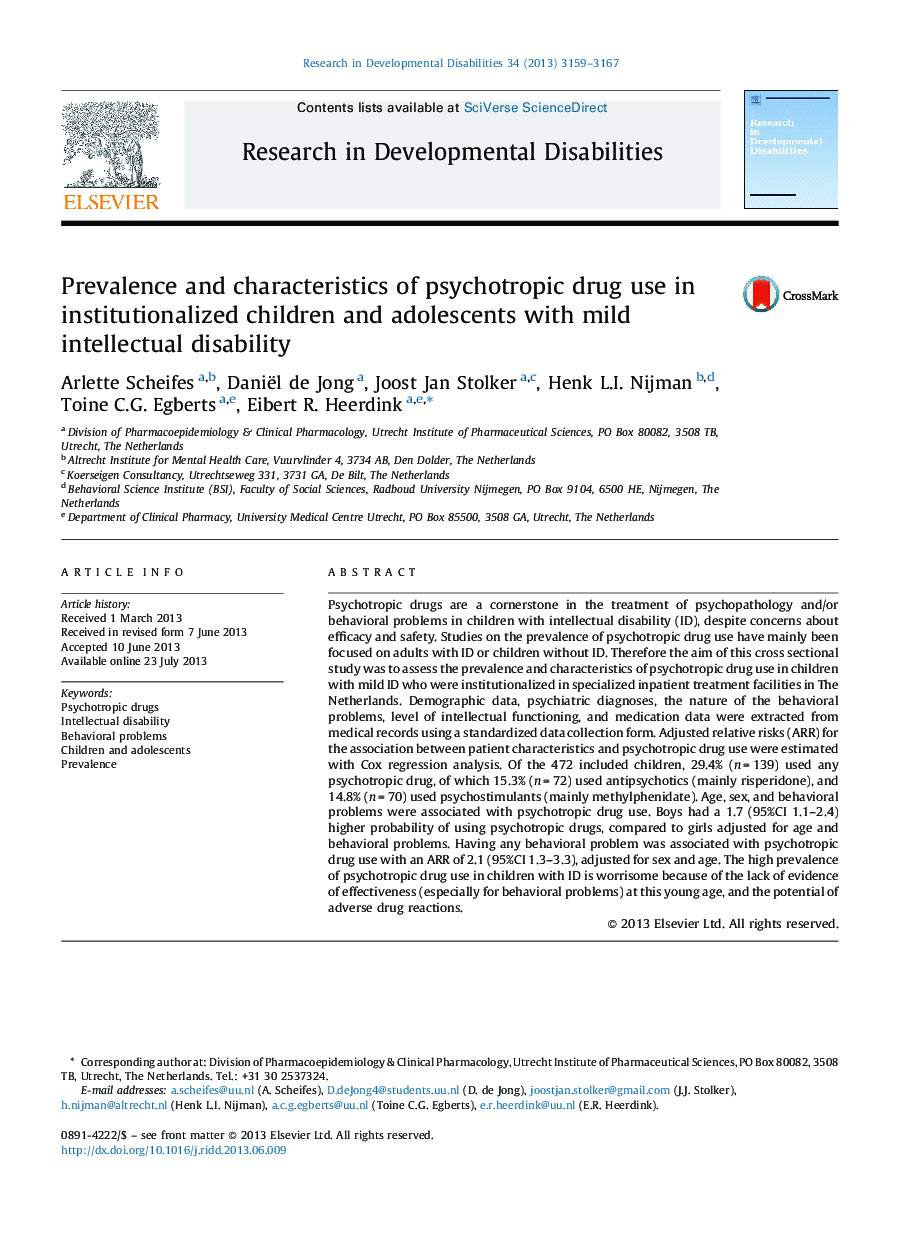| Article ID | Journal | Published Year | Pages | File Type |
|---|---|---|---|---|
| 10317867 | Research in Developmental Disabilities | 2013 | 9 Pages |
Abstract
Psychotropic drugs are a cornerstone in the treatment of psychopathology and/or behavioral problems in children with intellectual disability (ID), despite concerns about efficacy and safety. Studies on the prevalence of psychotropic drug use have mainly been focused on adults with ID or children without ID. Therefore the aim of this cross sectional study was to assess the prevalence and characteristics of psychotropic drug use in children with mild ID who were institutionalized in specialized inpatient treatment facilities in The Netherlands. Demographic data, psychiatric diagnoses, the nature of the behavioral problems, level of intellectual functioning, and medication data were extracted from medical records using a standardized data collection form. Adjusted relative risks (ARR) for the association between patient characteristics and psychotropic drug use were estimated with Cox regression analysis. Of the 472 included children, 29.4% (n = 139) used any psychotropic drug, of which 15.3% (n = 72) used antipsychotics (mainly risperidone), and 14.8% (n = 70) used psychostimulants (mainly methylphenidate). Age, sex, and behavioral problems were associated with psychotropic drug use. Boys had a 1.7 (95%CI 1.1-2.4) higher probability of using psychotropic drugs, compared to girls adjusted for age and behavioral problems. Having any behavioral problem was associated with psychotropic drug use with an ARR of 2.1 (95%CI 1.3-3.3), adjusted for sex and age. The high prevalence of psychotropic drug use in children with ID is worrisome because of the lack of evidence of effectiveness (especially for behavioral problems) at this young age, and the potential of adverse drug reactions.
Keywords
Related Topics
Life Sciences
Neuroscience
Behavioral Neuroscience
Authors
Arlette Scheifes, Daniël de Jong, Joost Jan Stolker, Henk L.I. Nijman, Toine C.G. Egberts, Eibert R. Heerdink,
